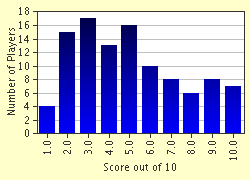Quiz Answer Key and Fun Facts
1. How many total Class 47s were produced?
2. Number 37093 was given a very unusual livery for a publicity stunt. This livery had one word on the side of this loco. What was the word?
3. Two Class 37 locomotives (Nos. 37138 & 37070) are used in an unusual way at Toton TMD. What way is this?
4. Which former BR loco class is the only class to have been painted in every BR subsector livery?
5. What were "ETHEL"s?
6. True or False: There is a direct Intercity connection between Holyhead and London with no intermediate changes.
7. Which rail line was built along the route of Hadrian's wall, almost 2,000 years after the wall was built?
8. All of Britain's railways adopted the 4 ft., 8 1/2 in. gauge except one, which adopted a 7 ft., 1/4 in. gauge. Which railway was this?
9. Which class of locomotive was used on 17 July, 1984 to test the survivability of nuclear flask wagons?
10. Where is the Alstom Midlands Test Center Headquarters located?
Source: Author
m1a2lt
This quiz was reviewed by FunTrivia editor
ozzz2002 before going online.
Any errors found in FunTrivia content are routinely corrected through our feedback system.


